Lecture 4: Energy, Linear Momentum, Rotational Motion, Statics
1/51
There's no tags or description
Looks like no tags are added yet.
Name | Mastery | Learn | Test | Matching | Spaced |
|---|
No study sessions yet.
52 Terms
Kinematics
description of motion (how things move)
Dynamics
Causes of motion (why things move)
Strong Nuclear
One of the four fundamental forces that holds atomic nuclei together, overcoming the repulsive electromagnetic force between protons.
Weak Nuclear
One of the four fundamental forces that is responsible for radioactive decay and neutrino interactions, playing a crucial role in nuclear reactions.
Electromagnetic
One of the four fundamental forces that gives matter stability, rigidity, etc., and gives em radiation
Gravitation
One of the four fundamental forces that governs large scale structure of the universe, gives orbits, etc.
Is it easy to understand how things behave from the fundamentals?
no
Would a rocket moving upward slow down or speed up (assuming it uses no further propulsion)
slow down
What would happen if a rocket would slow down to a stop before it reaches it’s destination?
It would be dangerous, only safe when it reaches to its destination
Energy
abstract concept; important because it’s conserved (can figure out how systems behave by balancing it before and after)
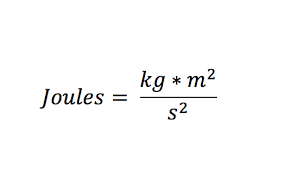
Joule
SI unit of energy
Kinetic energy
energy due to motion
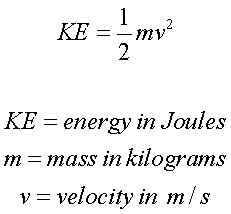
Gravitational Potential Energy (Earth)
energy stored due to an object's height above the ground, calculated as the product of mass, gravity, and height.

Conservation of Energy
(KE +PE) final = (KE + PE) Initial

PE between objects of masses m and M (not close to Earth)
The gravitational potential energy between two masses m and M at a distance r apart is given by the formula U = -G(mM/r), where G is the universal gravitational constant.
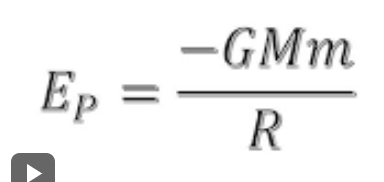
Spring Potential Energy
The energy stored in a compressed or stretched spring, calculated using the formula U = 1/2 kx², where k is the spring constant and x is the displacement from its equilibrium position.
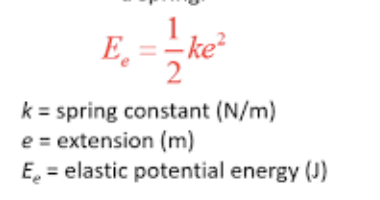
Work
a technical concept, different from the day-to-day sense

Power
Rate of doing work (unit is Watt (1J/sec); rate of emission or absorption of energy
Momentum
The quantity of motion an object possesses, defined as the product of its mass and velocity (p = mv), and is a vector quantity with both magnitude and direction.

Impulse
A change in momentum resulting from a force applied over time, defined as the product of the force and the time duration during which it is applied (Impulse = Force × Time).

Conservation of Momentum
For an isolated system, momentum cannot change

Inelastic collisions
KE is not conserved in the process
Elastic collisions
KE is conserved in the process
Conservation of Momentum (Elastic)
For elastic collisions, the total momentum and total kinetic energy of the system before and after the collision remain constant.

Conservation of KE + Momentum (Elastic)
In elastic collisions, both kinetic energy and momentum are conserved throughout the process.

Center of Mass
Captures the concept where the effective mass is

Equilibrium
“staying the same”; not changing
Static Equilibrium
motionless
Dynamic Equilibrium
Uniform motion (fixed speed and direction)
1st Condition for Equilibrium
For an object to be in equilibrium, the net force acting on it must be zero
2nd Condition for Equilibrium
For an object to be in equilibrium, the net torque acting on it must be zero
Torque
rotational version of force; a vector that can be clockwise or counterclockwise; greater = “easier” it is to “make rotation”

Stable equilibrium
A system is said to be in this type of equilibrium if, when displaced from equilibrium, it experiences a net force or torque in the same direction opposite to the direction of the displacement
Unstable Equilibrium
A system is said to be in this type of equilibrium if, when displaced from equilibrium, it experiences a net force or torque in a direction as the direction as the displacement
Neutral Equilibrium
A system is in this type of equilibrium if its equilibrium is independent of displacements from its original position.
Degrees to radians
is a conversion method used to transform angle measurements from degrees to radians, where one full circle is equal to 360 degrees or 2π radians.

Radians
unitless; ratios of lengths
arc length formula
s = rθ, where s is the arc length, r is the radius, and θ is the angle in radians.
displacement (rotational motion)
the change in position of an object in a rotational motion, measured as the angle through which the object has rotated.

speed/ velocity (rotational motion)
the rate of change of angular displacement of an object; it describes how fast an object rotates around an axis.

Tangential Acceleration
The rate of change of tangential velocity of an object in rotational motion, defined as the linear acceleration along the path of motion.

Centripetal Acceleration
the acceleration directed toward the center of a circular path, which keeps an object moving along that path.

Difference between centripetal acceleration and angular/rotational acceleration
Angular/rotational acceleration is tangent to the direction of motion while centripetal acceleration is radial
Frequency of rotational motion
measured in rev/sec (Hz)
Period of rotational motion
time for one revolution
Kinematic Equation A (Rotational Motion)

Kinematic Equation B (Rotational Motion)

Kinematic Equation C (Rotational Motion)

Moment of Inertia
Rotational version of mass. It is calculated with respect to the axis around which the rotation occurs; measure of a body’s resistance to torque
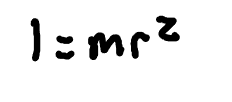
Moment of Inertia Decreases when..
mass is concentrated further from the axis (at larger values of r)
Total KE of a moving object
sum of linear and rotational KE

Angular Momentum
the product of an object's moment of inertia and its angular velocity. It represents the rotational analog of linear momentum.